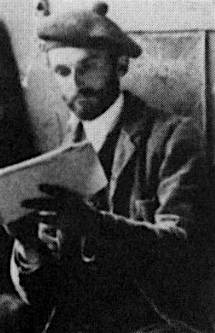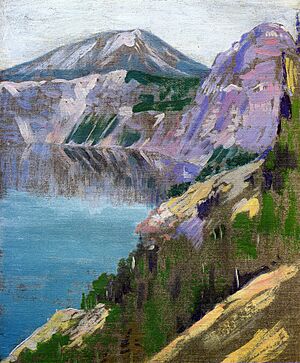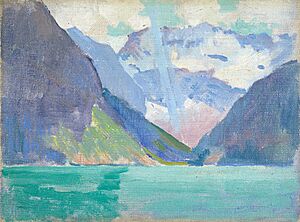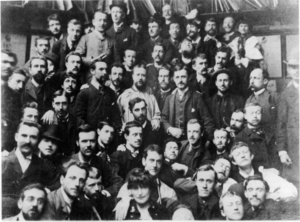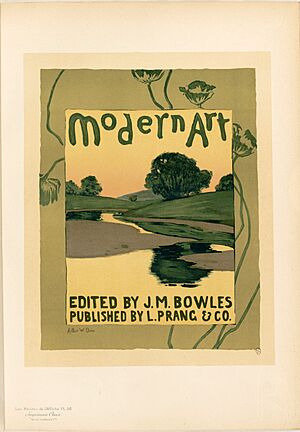Arthur Wesley Dow facts for kids
Arthur Wesley Dow (born April 6, 1857 – died December 13, 1922) was an American artist who did many things! He was a painter, a printmaker (someone who makes art prints), a photographer, and a very important art teacher. He helped change how art was taught in America.
Contents
Early Life
Arthur Wesley Dow was born in Ipswich, Massachusetts, in 1857. He started his art training in 1880 with Anna K. Freeland. The next year, he continued his studies in Boston.
In 1884, Dow traveled to Paris, France, to study art. He attended the Académie Julian, a famous art school. There, he learned from well-known artists like Gustave Boulanger and Jules Joseph Lefebvre.
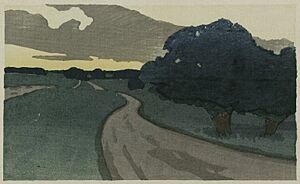
Art Career
In 1893, Dow became an assistant curator at the Museum of Fine Arts in Boston. There, he worked with Ernest Fenollosa, who showed him ukiyo‑e, which are Japanese woodblock prints. These prints had a big impact on Dow's own art.
Dow also created art for advertisements. For example, in 1895, he designed a poster for the Journal of Modern Art. In 1896, he made a poster for an exhibition of Japanese prints.
Arthur Wesley Dow taught art at several important schools in the United States. He taught at the Pratt Institute from 1896 to 1903. He also taught at the New York Art Students League during the same years.
In 1900, Dow started his own art school called the Ipswich Summer School of Art in Ipswich, Massachusetts. From 1904 until he passed away in 1922, he was a professor of fine arts at Columbia University Teachers College.
Death and Legacy
Arthur Wesley Dow passed away on December 13, 1922, in New York City. He was buried in the Old North Burying Ground in Ipswich, Massachusetts. He was married to Eleanor Pearson, whom he married in 1893.
How Dow Influenced Other Artists
Dow taught many famous American artists and craftspeople. Some of his students included Georgia O'Keeffe, Charles Sheeler, and Charles Burchfield.
One of his students, Pedro Joseph de Lemos, helped spread Dow's art ideas even further. De Lemos wrote many books and guides about art from 1918 to 1950, sharing Dow's theories with more art students. Dow also had an influence on the Byrdcliffe Colony, an arts and crafts community.
Where to See His Art
You can find Arthur Wesley Dow's artwork in many public museums. Some of these include the Metropolitan Museum of Art in New York City, the Brooklyn Museum, and the Museum of Fine Arts, Boston. His art is also in the Smithsonian American Art Museum in Washington, D.C., and many other collections.
Dow's Ideas on Teaching Art
Arthur Wesley Dow had new and exciting ideas about teaching art. He believed that artists should not just copy what they see in nature. Instead, he taught that people should create art by focusing on elements like lines, shapes, and colors to make a beautiful harmony.
Dow wanted everyone to see art as a part of everyday life, not just something fancy for a few people. He thought that if art was taught as a way for people to express themselves, more Americans would become interested in it. He encouraged students to use their own experiences when creating art.
His ideas about art were written down in his 1899 book, Composition: A Series of Exercises in Art Structure for the Use of Students and Teachers. In this book, he explained that "composition" means "putting together" lines, shapes, and colors to create harmony. He believed this was the main process in all fine arts.
Dow's method involved starting with simple harmonies and gradually building up. He felt this way of studying art included all types of drawing, design, and painting. It was a great way to train artists, teachers, or anyone who wanted to learn about art for their own enjoyment.


